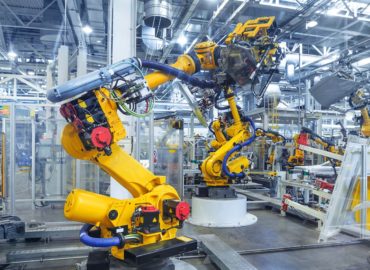Have you ever played chess against a computer?
Did you notice that Google tries to assume what you are looking for and suggests results on basis of that?
Or have you heard of self-driving vehicles?
Well, we all encounter these things in our day-to-day life as artificial intelligence has become a part and parcel of our life. It’s simply known as AI and can be defined as the things machines/computers can do that require natural intelligence displayed by humans and animals. Though AI term was coined in the 1960s, it came to prominence in the late 19th century due to increasing computational power and new ties between AI and other fields such as statistics, mathematics, and economics. In 1997, ‘Deep Blue’ became the first computer chess-playing system to beat a reigning world chess champion, Garry Kasparov. Over time, the AI became so strong that ‘AlphaGo’ defeated the then-current champion Lee Sedol in a Go match, considered as the most complex game in the world.
So, how AI works?
Well, it’s like a human baby. At first, it knows nothing, it needs data to learn and memorize things. Then it has to be programmed in a way that it can think and make decisions on something from previously learned facts. One day the time comes when it doesn’t need any human interference, it can generate data, restore those, and complete tasks on its own. AI has developed a number of tools to solve the most difficult problems in computer science. It uses search algorithms, mathematical optimization, logic programming, probabilistic methods, artificial neural networks, deep learning, etc.
Nowadays, we are getting dependent on gadgets and machines that use AI. We unlock our handset with face recognition, watch videos on VR, and play video games which are minor examples of AI. These features were once considered as major inventions of AI but now are not highlighted as great as then. Frequently, when a technique reaches mainstream use, it is no longer considered AI, this phenomenon is described as the ‘AI effect’. For instance, optical character recognition (OCR) is frequently excluded from things considered to be AI, having become a routine technology. Modern machine capabilities generally classified as AI include understanding human speech, competing at the highest level in strategic games such as chess, and go autonomously operating cars such as drones and military simulations. Besides, high profile examples of AI include medical diagnosis, proving mathematical theorems, a search engine like Google search, online assistants like Siri, image recognition in photographs, predicting flight delays, and targeting online advertisements. It is also used in electronic trading platforms, robot control, education, transportation, and what not?
There are some philosophical arguments.
Are there hard limits to what a machine can accomplish? Are intelligent machines dangerous? Some people consider AI to be a danger to humanity if it progresses unabated. Others believe that AI, unlike previous technological revolutions, will create a risk of mass unemployment. Physicist Stephen Hawking, Microsoft founder Bill Gates and SpaceX founder Elon Musk have expressed concern about the possibility that AI could evolve to the point that humans could not control it, with Hawking theorizing that it could spell the end of the human race. On the other hand, some people believe that AI is helpful in its current form and will continue to assist humans. Oracle CEO Mark Hurd has stated that AI will actually create more jobs, not fewer jobs as humans will be needed to manage AI systems. Facebook CEO Mark Zuckerburg believes AI will unlock a huge amount of positive things such as curing disease and increasing the safety of autonomous cars.
It should not be a major concern of us whether AI will become harmful in the future or not. It is more unlikely to happen in near future. So, now we should enjoy the advantages that AI provides, celebrate the increasing development of computer science, and concentrate on how to improve artificial intelligence more ethically.





